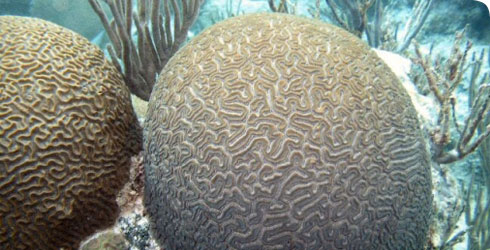Diploria labyrinthiformis (grooved brain coral)
Diploria labyrinthiformis is a species of brain coral, so-named because of its appearance.
The coral lives in shallow water habitats, such as reefs. A single-celled symbiotic algae lives within its cells and so it can only survive in water which receives enough light for photosynthesis to take place.
Corals are very sensitive to environmental changes and coral reef populations are declining rapidly, with global warming one of the factors responsible.
Species detail
The skeletons of pristine living forms of Diploria labyrinthiformis consist, like all other scleractinian corals, of the mineral aragonite, a form of calcium carbonate (CaCO3).
In older specimens, and especially fossilised forms, this changes into calcite (CaCO3) or other minerals.
Ocean acidification is an additional threat to corals with hard skeletons because calcium carbonate dissolves in acid, so they cannot form their skeletons properly in an acidic environment.
-

Growth and form of Diploria labyrinthiformis
The grooved brain coral is made up of intergrown, valley-like structures. Learn more about its growth and form.
-

Distribution and ecology
Find out more about the environments in which this coral occurs.
Images
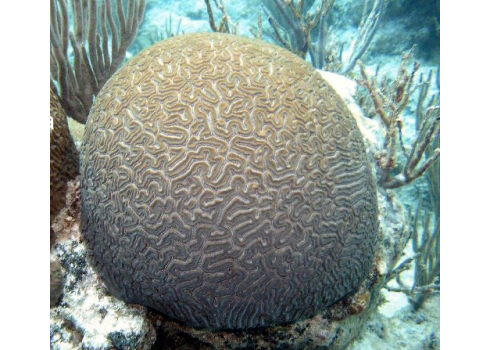
The grooved brain coral, Diploria labyrinthiformis.
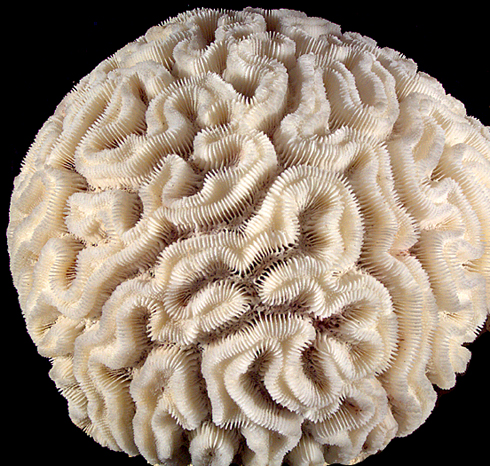
A dome-shaped colony of the grooved brain coral, Diploria labyrinthiformis. This recent specimen comes from Whalebone Bay, Bermuda
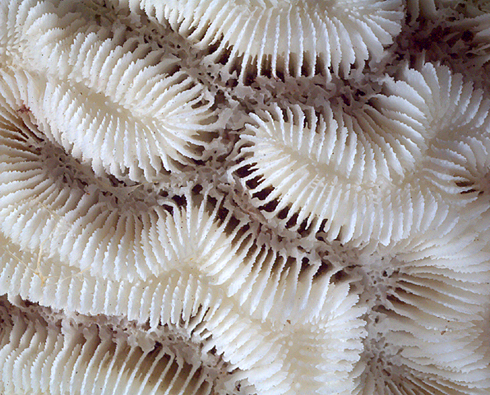
Close-up of the surface detail of the valleys and ridges of the grooved brain coral. This recent specimen comes from Whalebone Bay, Bermuda.
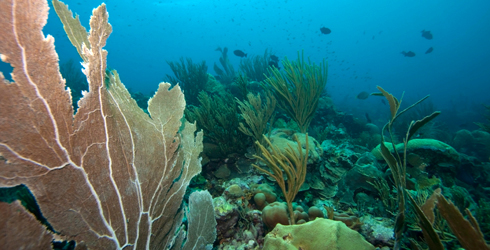
A typical Caribbean coral reef in Bonaire in the Netherlands Antilles. The grooved brain coral is a typical common coral of Atlantic shallow water habitats, including Caribbean reefs. © www.istockphoto.com
About the authors
Toolbox
Glossary
Symbiotic
A symbiotic organism is one that lives closely with another organism of a different species in a prolonged way. This association is referred to as symbiosis and is often, but not always, mutally beneficial.
